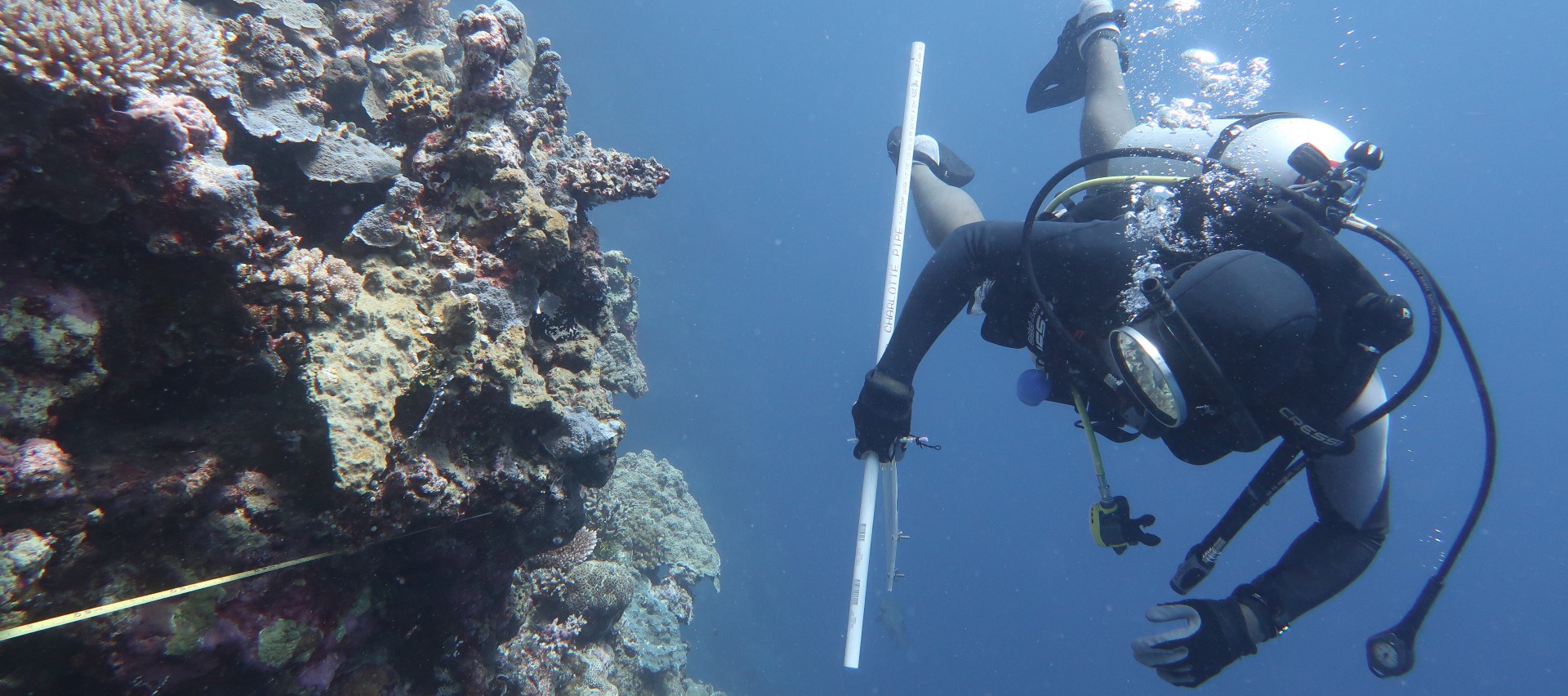- Research
Palau’s reef can slowly recover from the devastating impacts of typhoons, finds new report
A newly published technatical report on a 19-year-long study has found that Palau’s reefs can slowly recover from typhoons but they’ve also been impacted by other stressors. The study, conducted by the Palau International Coral Reef Center (PICRC), highlights the importance of ongoing monitoring to assess trends in coral cover, fish biomass, and the numbers of macro-invertebrates and coral recruits (juvenile corals of 5cm or less).
“Coral reefs are an important source of food and income for many countries, especially island nations,” stated Victor Nestor, lead author of this report. “Yet, globally, they are under threat from a mix of natural and human-caused disturbances. Palau is no exception to this.”
To help with management, PICRC established a coral reef monitoring project in 2001. This project surveys corals, coral recruits, macro-invertebrates, and fish biomass at a shallow (3m) depth and a deep (10m) depth at 23 sites around Palau across four habitats—outer reefs off the west coast, outer reefs off the east coast, inner reefs, and patch reefs.
The data collected shows the devastating impacts of Typhoon Bopha in 2012 and Typhoon Haiyan in 2013 on Palau’s eastern reefs. The outer reef habitat on the east coast lost more than 80% of coral cover during these typhoons. Coral recruits in the area returned to pre-typhoon densities by 2015. Since 2013, coral cover on these reefs is slowly but steadily recovering.
The report also found that, over the past 13 years, the overharvesting of fish and macro-invertebrates is threatening Palau’s coral reefs. This supports PICRC’s fish stock assessment in 2017, which showed that Palau’s reef fish are overexploited.
“Since 2020 there have been regulations set in place to conserve Palau’s coral reefs,” stated Geraldine Rengiil, PICRC’s Research Director. “This ongoing monitoring project helps us to assess how Palau’s reefs are responding to overharvesting, typhoons, and the impacts of the climate crisis, and allows us to make informed management recommendations.”
The report, titled “Palau reefs after 19 years of monitoring show steady recovery from typhoon” can be found at https://picrc.org/work/technicalreports/. To request a copy or to discuss these findings further, email [email protected].


